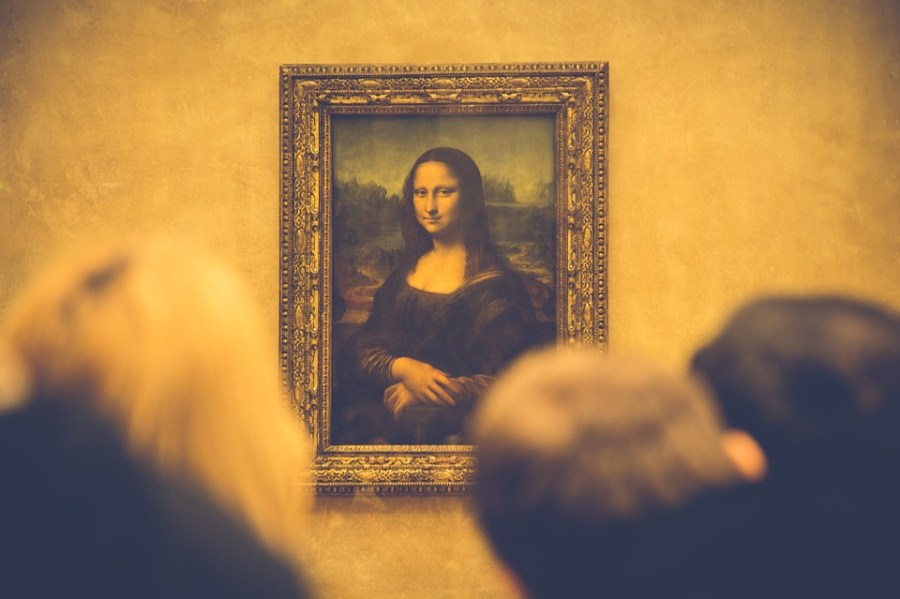The Art and Science of Cooking by Nathan Myhrvold

Whether you consider information technology an investment, a hobby or only a cool mode to decorate the walls in your dwelling house, acquiring new fine art can be a fun and exhilarating experience. Although many people assume collecting art is simply for millionaires, the truth is you can showtime your own art collection on any upkeep. You may not have the funds to fill it with famous pieces, but all that matters is that you fill it with pieces you lot dear.
Know What You Like
Beginning, only collect what you like, even if it's something obscure that others may not appreciate or sympathize. Unless you're but trying to make a quick buck — and that's often hard to do — putting together a collection won't be fun if you forcefulness yourself to choose items just considering they're trendy. If you aren't certain what you love, go to the library and check out some art history books. Go to art galleries in your customs, and check out the artisan booths at local fairs and festivals. Do a simple internet search, visit an antiquarian shop or flip through the art at your local craft store or large box store. Figure out what appeals to you, and use that equally a starting signal.
Know Where to Look
The side by side footstep is knowing where to find the art y'all like. Some of the places you visit to notice your taste may also sell the types of pieces you like. Craft fairs, festivals, antique shops and galleries are good examples, but you lot can shop for fine art at many other places, including manor sales, where you may find rare and unique pieces, and art websites like Etsy, ArtStar, Uprise Art and Editioned Art. Some artists allow yous to visit their studios, and sale houses typically take art in their inventories. If y'all go to auctions exterior of major cities, you lot may fifty-fifty find a rare piece at an excellent price.
Do Your Homework
Earlier you brand a purchase, especially an expensive purchase, you want to do your homework on the artist, the item and its background before signing on the dotted line. In some cases, the seller may not realize the value of an item and sell it for a bargain price, just you don't want to pay too much for a piece, fifty-fifty if you lot dear it. You lot also want to avoid buying something advertised as an accurate piece that is really but a reproduction. Be on the lookout for fraudulent items, and larn how to read the documentation that verifies the authenticity and provenance of a piece of art.
Have It Slow
If you know your budget for starting an art collection, don't blitz out and spend it all in 1 solar day. Don't expect to put together a huge, envious collection overnight. It takes fourth dimension to curate the perfect collection for your interests, tastes and passions. For many art collectors, the hobby becomes a lifelong journey. You lot never know when a new artist you discover turns into a huge success, making that $100 painting you lot bought worth a small-scale fortune — and bragging rights — one day. Starting slow likewise allows you to salve up for the more expensive pieces you may want to buy one solar day.
Treat Your Art Well
Finally, after you purchase your first pieces, make sure you lot take intendance of them. Learn how to display and preserve everything you buy, and make sure you accept plenty of space to keep your fine art. Certain, you could hire a storage building if you lot don't have enough room in your home for all your treasures, but what's the point in having an awesome collection if you can't show information technology off? If you acquire expensive pieces, insure them against theft and disasters. You may as well desire to brand a plan for what happens to your fine art after you pass abroad. If you don't have family, y'all may want to donate art to a museum or clemency, for example.
galesdevescithhen.blogspot.com
Source: https://www.questionsanswered.net/article/how-to-start-an-art-collection?utm_content=params%3Ao%3D740012%26ad%3DdirN%26qo%3DserpIndex
0 Response to "The Art and Science of Cooking by Nathan Myhrvold"
Post a Comment